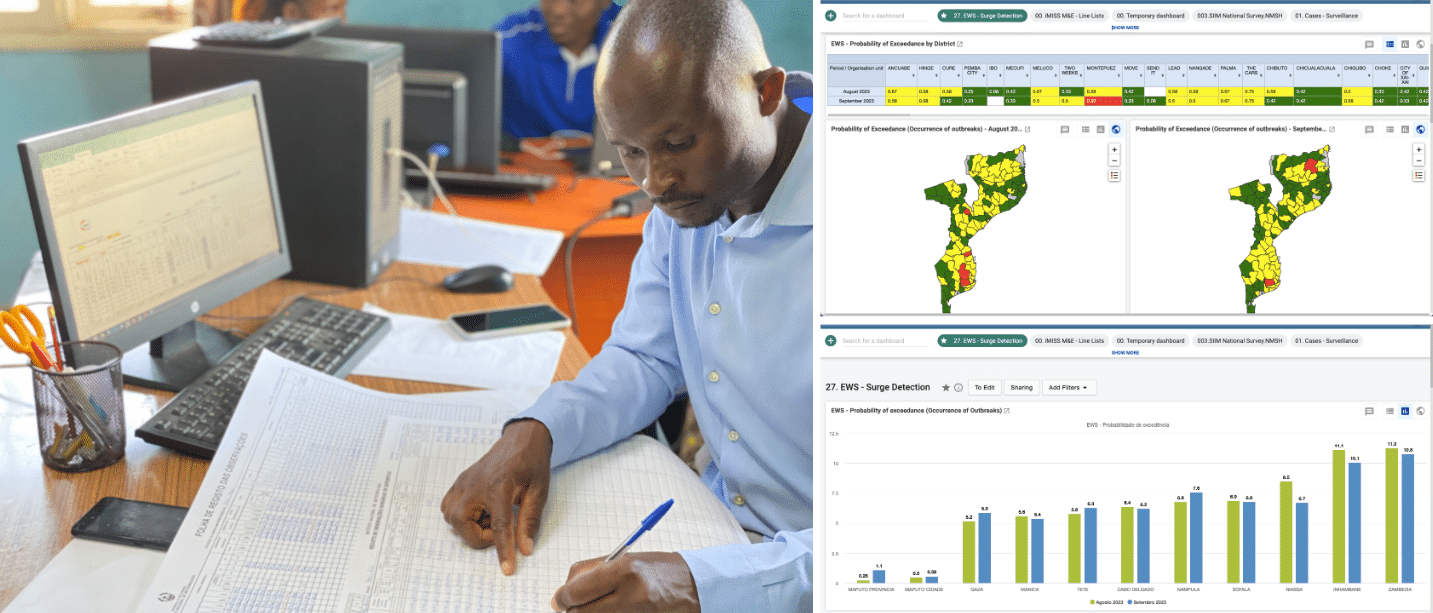Why use DHIS2 for Climate & Health?
Leveraging existing digital health systems to support effective and timely analysis and decision making in response to climate-sensitive health risks
Jump to a section on this page
Close the data gap between Climate & Health
One of the biggest challenges in making informed decisions about the impacts of climate change on human health is the gap between climate and health data. In many low- and middle-income countries, there are significant gaps in the digitization of local climate and weather data, and these data are frequently not available for use by health systems. Using DHIS2 as a platform for Climate & Health data helps break down silos that prevent combined analysis and identification of causal relationships between climate change and health impacts.
- Integration of climate data into national health systems
- Development of Climate & Health analytical and modeling tools to show causal relationships between climate factors and health outcomes
- Design of data visualizations and dashboards to provide actionable information to decision makers and health workers

Strengthen the climate resilience of national health systems
Climate change poses extensive and diverse challenges to human health, the impacts of which can vary greatly due to geographical, institutional, and socioeconomic factors, among others. Enhancing existing DHIS2 systems to support effective and timely analysis and decision making in response to climate-sensitive health risks can help strengthen the climate resilience of national health systems.
- Deploy sustainable digital Climate & Health systems that address local health priorities
- Provide evidence for national climate change adaptation and public health policies
- Support effective health interventions to respond to climate-related health risks

Leverage the world’s biggest Health Information Management System
DHIS2 is already used by Ministries of Health in more than 80 countries for routine public health data. This means that the many low- and middle-income countries already have health data in DHIS2 systems that can be relevant in Climate & Health contexts, and the local skills and infrastructure needed to effectively use DHIS2 Climate & Health systems to inform decision making and improve health interventions. DHIS2 also features built-in functionalities that support extending the platform for Climate & Health use cases, including full local customizability, interoperability with external specialized software platforms, and integration of diverse data types.
This makes using DHIS2 for Climate & Health a more cost-effective and sustainable solution than designing and deploying bespoke, proprietary solutions. Using DHIS2 builds on local capacity, supports local ownership and innovation, and leverages the global DHIS2 community for sharing of standards and best practices to help countries around the world respond to the climate change crisis.